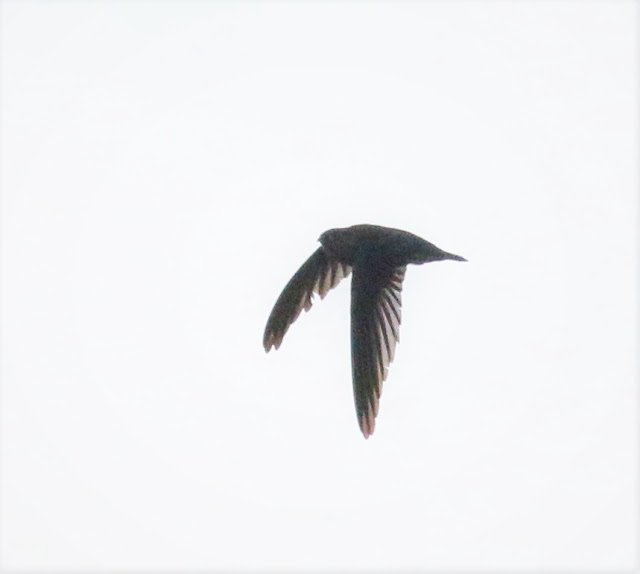Merbok is a small sleepy town located in a Northern state of Peninsular Malaysia. It was believed that the place was once a site of an ancient civilization or trade centre where its archaeological sites/ruins can be seen just from the roadside. I was there not as "Indiana Jones" but more for the birds which can be seen/found in the area especially the Mangrove Pitta. Here are some of the birds which i have seen although the Mangrove Pitta had decided to stay hidden.
 |
| Jungle Myna (Acridotheres fuscus) |
Jungle Myna are common in the Northern states of Peninsular Malaysia especially from Penang upwards. They can be found mostly around plantation areas, jungle edges and interior villages. There were some discussions out there as to why most photos don't show the bluish base at their bill as described by some field guides. I have actually seen Jungle Myna with their bluish bill base but unfortunately it was in a pet shop. Could the bluish color only appear during courtship, or when they are afraid or perhaps it will only shown if the birds are not hybrids? They are known to cross breed with Common Myna.
 |
| Oriental Pratincole (Glareola maldivarum) |
I didn't expect to see Oriental Pratincole at this time of the year. Alan J (2012) field guide however mentioned that there are a few resident colonies in the state of Kedah and Perlis. Could this be a resident bird then?
I saw a total 5 birds. They were mainly airborne, thanks / no thanks to Mr Brahminy Kite which was thermalling above them. Most of them were juvenile/sub adult and probably just one adult as shown below.
If you happen to bump into this bird, do come out from your car and watch them fly. Their graceful flight patterns are definitely pleasing to see.
At times they would do some preening in flight.
This swiflet is the master of airborne activities. They could do almost anything in flight, from eating to preening etc.
Hardly see them in my birding trips and i think you can see Everett's white-eye (Zosterops everetti) more often than these white-eye.
Pacific Swallow
On my way back, i bump into a family of Smooth-coated Otters (Lutrogale perspicillata)


Once everyone were safely across, the adults lead the way into the mangroves.
"No, you go first, i will cover for you" !
 |
| Oriental White-Eye (Zosterops palpebrosus) |
Pacific Swallow
Photos were taken near some mangrove area hence the pleasing greenish background albeit with some noise texture.
On my way back, i bump into a family of Smooth-coated Otters (Lutrogale perspicillata)

The above photo was taken from inside my car about 60 m away. I decided to stop the car as i sense they are about to cross the road. The first otter probably an alpha male / patriarch was constantly looking at my direction before signaling them to cross the road.
One by one they dashed across the road as fast as they could. The young ones were accompanied closely by their parents as would by any human parents with their children.

Once everyone were safely across, the adults lead the way into the mangroves.
"No, you go first, i will cover for you" !
Even at this young age, the behavior of "looking out for each other" in this species of otter had already embedded into them. Not sure whether this behavior had emerged thru observation from their parents or perhaps they are already in their genes. Anyway they really cute animals!
HAPPY BIRDING !
















































